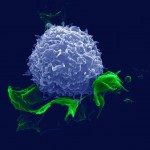Link to Pubmed [PMID] – 1848875
J. Hepatol. 1991 Jan;12(1):70-4
We conducted a retrospective study in 229 patients to determine the prevalence of hepatitis C virus (HCV) according to the type of liver disease and also the serum hepatitis B virus (HBV) status. There were 55 cases of hepatocellular carcinoma (HCC), 78 cases of alcoholic cirrhosis (AC) and 96 cases of non-cirrhotic alcohol liver disease (NCA). Half the AC and NCA groups were constituted of patients with or without serum HBV markers. The prevalence of anti-HCV antibodies in HCC (58.2%) was significantly higher than in the other groups (AC, 35.9%; NCA, 17.7%). Combining the two AC and NCA groups gave a 25.8% anti-HCV prevalence in the alcoholics. Altogether anti-HCV antibodies were more frequently present in HBV-positive than in HBV-negative patients (42.2 vs. 26.1%, p less than 0.01), although the difference was not significant when the HCC group was separately analysed. The S/N ratio of anti-HCV-positive samples varied according to the type of the disease (tumorous vs. non-tumorous) and to the serum HBV status. Indeed, 65.6% of HCC had a S/N greater than 4 compared to only 32.2 and 23.5% in AC and NCA, respectively (p less than 0.01). On the other hand more than half of the AC and NCA had a S/N less than 2, indicating possible artefacts in certain cases. The 15 HBsAg and anti-HCV-positive patients had a significantly lower mean S/N than patients displaying only antibodies against HBV, even in the HCC group.(ABSTRACT TRUNCATED AT 250 WORDS)

